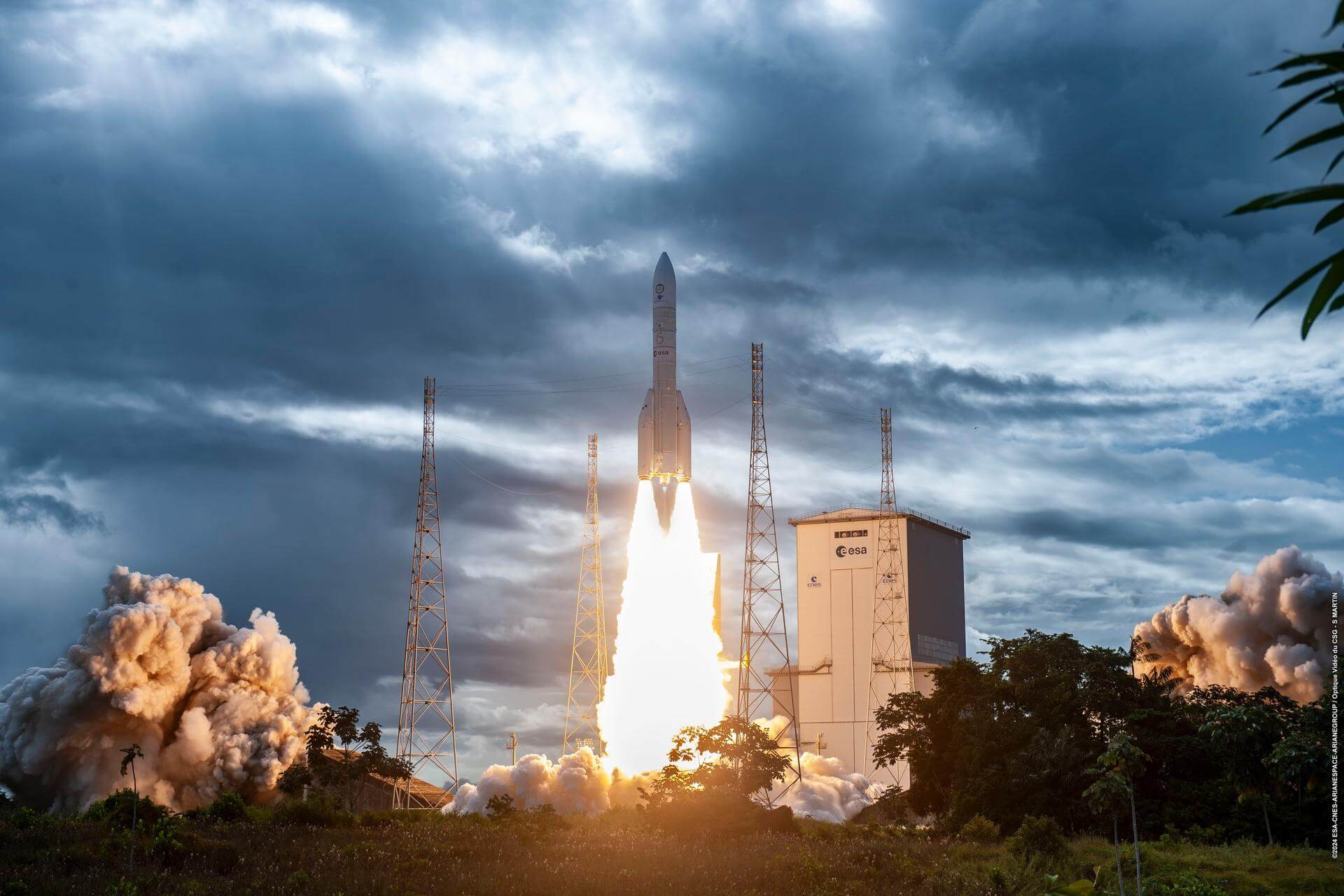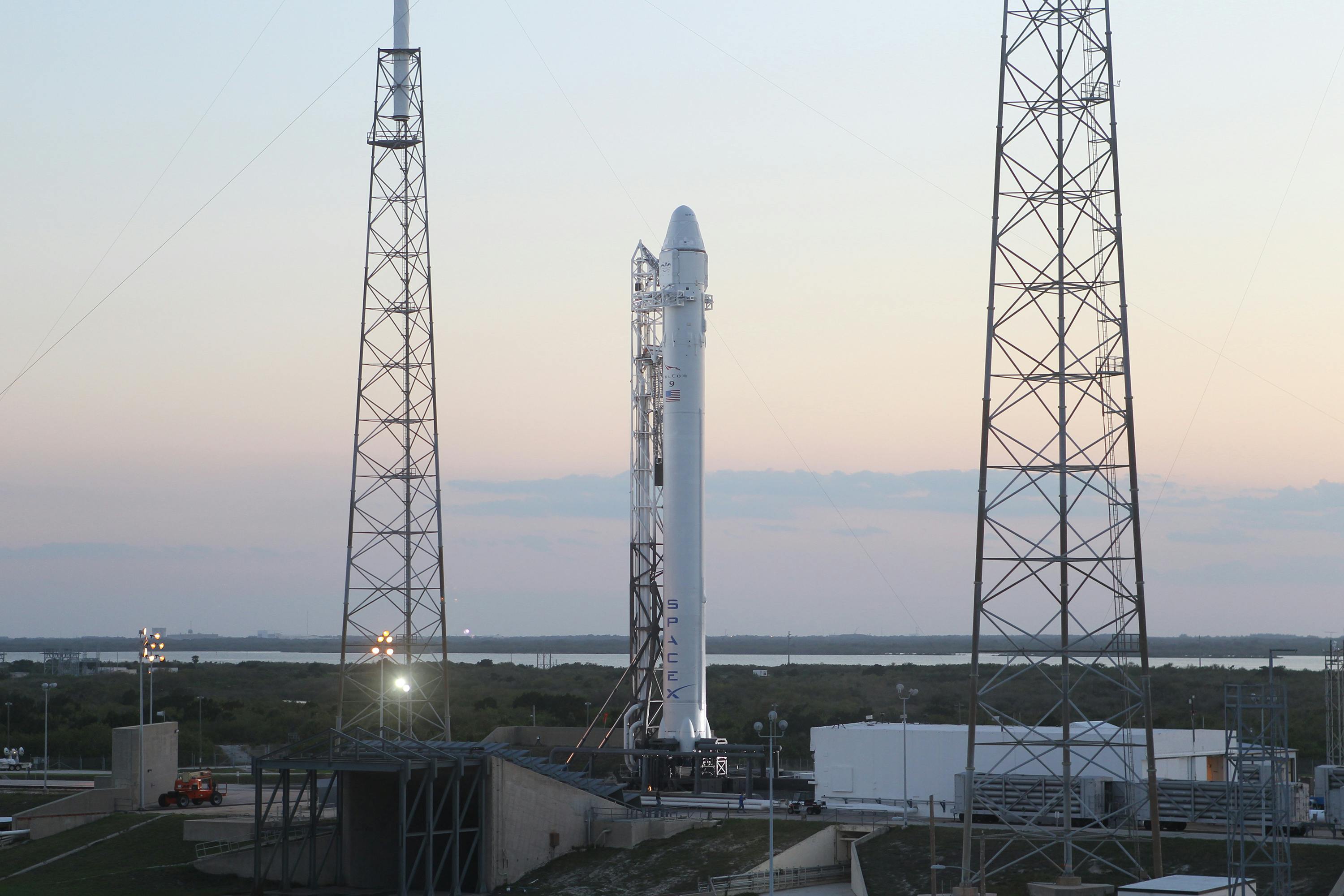· space brief · 6 min read
Space Brief 12 May 2025
Today's brief covers key industry movements in space logistics and satellite production, including Rocket Lab's new U.S. Air Force contract, Sierra Space's strides in GPS technology, and more.

📄Top Stories
Today’s space news highlights Rocket Lab’s emerging role in military logistics with its new Air Force contract, Sierra Space reaching a pivotal phase in its GPS technology development, and SpaceX facing a delay with its ambitious Starlink mission. Industry collaborations continue as Rheinmetall and ICEYE form a partnership to advance satellite production.
📰Detailed Coverage
Rocket Lab Secures Key Contract with U.S. Air Force
Rocket Lab has announced a major contract with the U.S. Air Force Research Laboratory to launch its reusable rocket, Neutron, in 2026. This mission is set to test rapid, point-to-point cargo transportation, a significant step for military logistics and strategic readiness. Such advancements highlight the growing intersection between commercial space technology and military operations.
The Neutron rocket, designed for medium-lift missions, will enhance capabilities for deploying cargo quickly across the globe, augmenting defense strategies with flexibility and speed. For satellite tracking enthusiasts, this development represents a future leap in tracking fast-moving, mission-critical payloads, applicable to our web app’s real-time tracking features.
Read the full story: Space Daily
Sierra Space Advances in Resilient GPS Technology
Sierra Space has completed a critical testing phase for its Resilient GPS (R-GPS) technology, in cooperation with the U.S. Space Force. This milestone reflects the successful integration of FlatSat flight software alongside crucial hardware components. The R-GPS system is designed to provide highly resistant and accurate positional data, crucial for military and civilian applications.
The project showcases Sierra Space’s commitment to advancing space-based navigation technologies, emphasizing durability and precision in challenging environments. This progress highlights the growing reliability of satellite-based GPS systems, aligning well with innovations within our platform.
Read the full story: GPS Daily
SpaceX Scrubs Record-Breaking Starlink Launch
SpaceX has delayed the launch of its Starlink 6-83 mission, originally set to send 28 satellites into orbit using a Falcon 9 booster on its 28th flight. This postponement affects the company’s broader timeline for expanding its internet-providing satellite constellation and marks a rare delay in SpaceX’s usually precise schedule.
The launch from Launch Complex 39A was part of SpaceX’s larger plan to bolster global satellite internet coverage, showcasing the ongoing expansion of low Earth orbit (LEO) constellations. Despite the delay, such launches remain pivotal for observation and tracking via our platform.
Read the full story: Spaceflight Now
Industry Giants Collaborate: Rheinmetall and ICEYE
Rheinmetall and ICEYE have formed a joint venture aimed at enhancing satellite production and space solutions, signaling a strategic expansion into the competitive space market. This partnership, outlined in a memorandum of understanding, focuses on leveraging synthetic aperture radar (SAR) technology to offer advanced solutions.
The collaboration promises to blend ICEYE’s SAR satellite expertise with Rheinmetall’s extensive defense and industrial technology portfolio, potentially leading to more robust and versatile satellite systems. This move illustrates a significant trend of consolidation in the space sector, driving advancements in satellite construction and deployment.
Read the full story: Space Daily
Rocket Lab’s Constellation Ambitions with Mynaric
Rocket Lab’s planned acquisition of German optical communications firm Mynaric is seen as crucial for its constellation ambitions. The deal aims to position Rocket Lab competitively for large constellation bids and self-deployment projects, enhancing its service offerings in space communications.
This acquisition aligns with the growing demand for interconnected satellite networks that provide seamless communication capabilities, an aspect vital for both commercial satellites and military applications. It reflects the broader industry trend of integrating advanced technologies to support expansive satellite constellations.
Read the full story: Space News
🛰️Satellite Spotlight
- Satellite Name: O3B FM3
- NORAD ID: 40079
- Launch Date: July 10, 2014
- Mission: O3B FM3 is part of a communication constellation designed to provide high-speed satellite broadband services to remote areas around the world.
- Orbit: Medium Earth Orbit (MEO)
- Operator: O3B Networks
- Fun Fact: O3B stands for “Other 3 Billion,” referring to the billions of people in underserved regions who benefit from better connectivity through this satellite network.
Track this satellite in real-time on our web app: Track O3B FM3
🌌Space Weather
Space weather conditions are currently quiet.
R0 - S0 - G0
Next 24 Hours: For satellite operators, there is no risk of radio blackouts or solar radiation storms, allowing for uninterrupted operations and communications. Ground-based radars and telescopes can function without concerns for interference. However, an isolated period of G1 (Minor) geomagnetic conditions is anticipated, which may cause minor fluctuations in GPS accuracy and affect high-frequency radio communications temporarily. Fortunately, no significant active regions are expected to contribute to radiation storm activity, ensuring a stable environment for satellite communications and operations.
Beyond: Looking ahead, solar activity is expected to remain predominantly low from 12 May to 07 June 2025, with only variable chances for M-class flare events—no proton events are predicted at geosynchronous orbit. The greater than 2 MeV electron flux will be at moderate levels from 06-28 May and again on 06-07 Jun, presenting some potential risks for satellite components during these times. High levels of electron flux will occur from 29 May to 05 Jun due to the influence of Negative Polarity Coronal Hole High-Speed Streams (CH HSS). Geomagnetic field activity will likely reach minor storm levels between 28 May and 01 Jun, while active levels may occur on 13 May and again on 02 Jun and 06 Jun. Most days are expected to be unsettled, but there will be periods of quiet conditions from 15-17 and 22-26 May, beneficial for satellite operations and ground-based observations.
Upcoming Space Launches
May 12
- China Aerospace Science and Technology Corporation Long March 3C/E:
- Unknown Payload from Xichang Satellite Launch Center, People’s Republic of China (17:59 UTC) Details TBD.
May 13
- SpaceX Falcon 9 Block 5:
- Starlink Group 15-4 from Vandenberg SFB, CA, USA (00:00 UTC) A batch of satellites for the Starlink mega-constellation - SpaceX’s project for space-based Internet communication system.
- SpaceX Falcon 9 Block 5:
- Starlink Group 6-83 from Kennedy Space Center, FL, USA (03:36 UTC) A batch of 28 satellites for the Starlink mega-constellation - SpaceX’s project for space-based Internet communication system.
May 14
- China Aerospace Science and Technology Corporation Long March 2D:
- Unknown Payload from Jiuquan Satellite Launch Center, People’s Republic of China (04:03 UTC) Details TBD.
- SpaceX Falcon 9 Block 5:
- Starlink Group 6-67 from Cape Canaveral SFS, FL, USA (15:43 UTC) A batch of satellites for the Starlink mega-constellation - SpaceX’s project for space-based Internet communication system.
May 15
- Gilmour Space Technologies Eris-1:
- Maiden Flight from Bowen Orbital Spaceport (00:00 UTC) Maiden flight of Gilmour Space’s orbital launch vehicle Eris.
- LandSpace Zhuque-2E:
- Unknown Payload from Jiuquan Satellite Launch Center, People’s Republic of China (04:04 UTC) Details TBD.
May 16
- SpaceX Falcon 9 Block 5:
- Starlink Group 15-5 from Vandenberg SFB, CA, USA (13:00 UTC) A batch of satellites for the Starlink mega-constellation - SpaceX’s project for space-based Internet communication system.
May 17
- Rocket Lab Electron:
- The Sea God Sees (iQPS Launch 2) from Rocket Lab Launch Complex 1, Mahia Peninsula, New Zealand (08:15 UTC) Synthetic aperture radar Earth observation satellite for Japanese Earth imaging company iQPS.
Note: Launch dates and times are subject to change due to technical or weather considerations.

Maurice Stellarski





